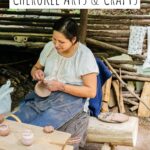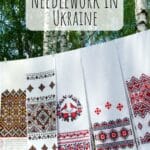A Brief History of Navajo Arts and Crafts
The Navajo tribe, known for its rich cultural heritage and deep spiritual connections to the land, has a longstanding tradition of arts and crafts that are integral to its identity. These crafts not only serve as expressions of creativity but also hold profound cultural significance, reflecting the Navajo people’s beliefs, history, and way of life.
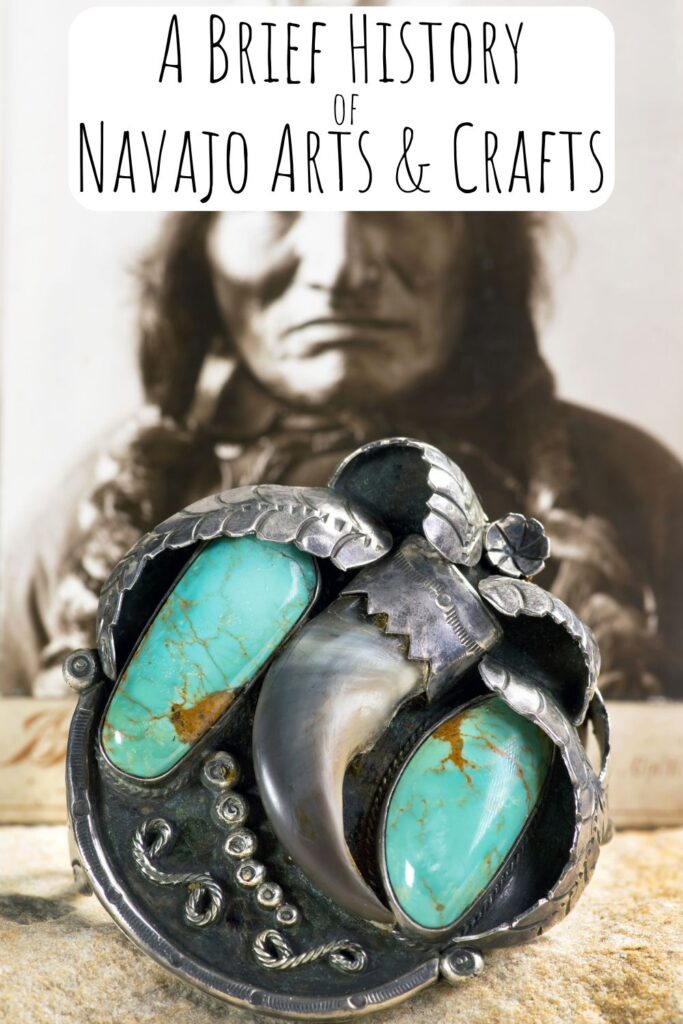
The history of Navajo arts and crafts is as old as the tribe itself, dating back centuries to the time when the Navajo first settled in the Southwestern United States. Influenced by their ancestors and interactions with neighboring tribes and Spanish settlers, Navajo artisans developed a distinctive artistic tradition that continues to thrive today.
Cultural Significance of Navajo Arts and Crafts
In Navajo culture, arts and crafts are more than just aesthetic creations; they are spiritual manifestations of the tribe’s connection to the natural world and their ancestors. For example, Navajo rugs and blankets, woven with intricate designs and vibrant colors, are not merely decorative items but symbols of protection, warmth, and harmony. Similarly, silver jewelry crafted by Navajo silversmiths is imbued with symbolism and serves as talismans of strength and beauty.
Traditional Navajo Crafts
Weaving: Navajo weaving is perhaps one of the most iconic and revered art forms within the tribe. Utilizing a traditional upright loom, Navajo weavers create stunning rugs and blankets characterized by their geometric patterns and earthy hues. These textiles are not only functional but also carry deep cultural meaning, with each design reflecting stories, prayers, and teachings passed down through generations.
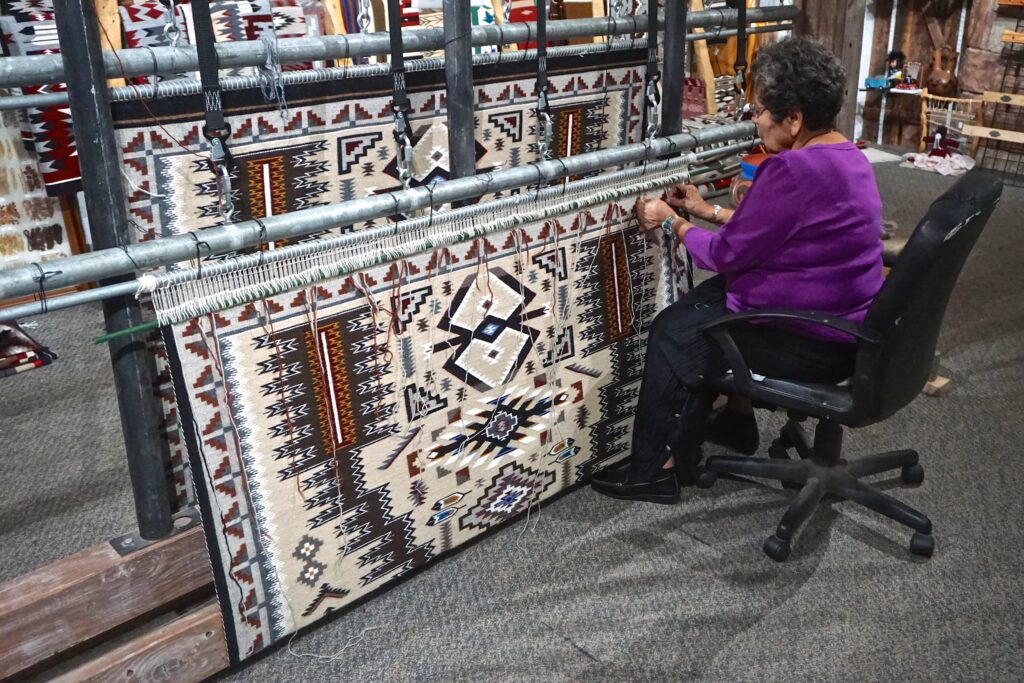
Silversmithing: The art of silversmithing holds a special place in Navajo culture, introduced to the tribe by Spanish settlers in the 19th century. Navajo silversmiths quickly adapted the craft to their own traditions, incorporating traditional motifs and techniques to create exquisite jewelry and ornaments. From intricately stamped cuffs to delicate turquoise necklaces, Navajo silverwork continues to captivate collectors and enthusiasts around the world.
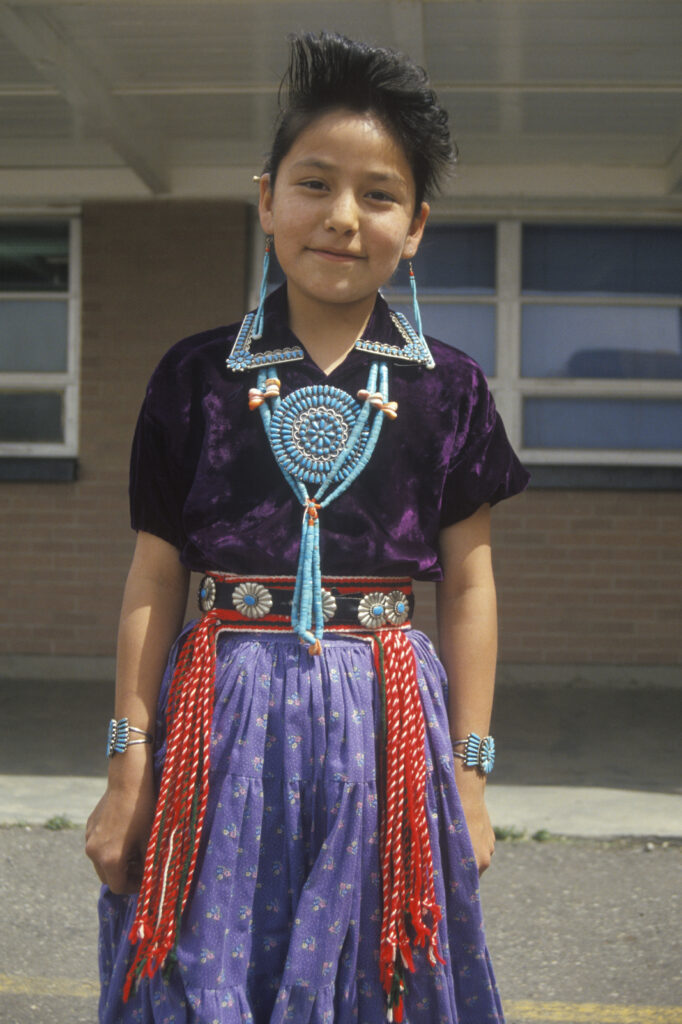
Pottery: Navajo pottery, while less prevalent than weaving and silversmithing, is no less significant in its cultural importance. Traditionally made using coiling techniques and fired in outdoor kilns, Navajo pottery features distinctive designs inspired by nature and spiritual beliefs. From intricately carved seed pots to elegantly shaped vessels, Navajo pottery reflects the tribe’s reverence for the earth and its natural beauty.

Beadwork: Beadwork has long been a part of Navajo ceremonial attire, with intricate bead designs adorning clothing, moccasins, and accessories. Each bead carries symbolic meaning, representing elements of nature, spiritual concepts, or personal stories. Navajo beadwork is not only visually stunning but also serves as a means of preserving cultural heritage and connecting with ancestral traditions.
Contemporary Adaptations
While traditional crafts remain central to Navajo culture, contemporary artisans are also exploring new mediums and techniques to express their creativity. Textile artists are experimenting with modern designs and materials, while jewelry makers are blending traditional silversmithing techniques with contemporary styles. Additionally, Navajo artists working in painting, sculpture, and mixed media are pushing boundaries and challenging perceptions of Native American art in the contemporary art world.
Economic and Cultural Impact
The economic and cultural impact of Navajo arts and crafts cannot be overstated. For many Navajo artisans, crafting is not just a hobby but a means of supporting themselves and their families. The sale of Navajo art generates vital income for tribal communities, contributing to economic stability and self-sufficiency. Moreover, Navajo art plays a crucial role in preserving cultural identity and fostering pride within the tribe, serving as a reminder of the resilience and creativity of the Navajo people.
Challenges and Preservation Efforts
Despite the importance of Navajo arts and crafts, artisans face numerous challenges in preserving and promoting their traditions. Economic pressures, competition from mass-produced goods, and issues of cultural appropriation pose significant threats to traditional Navajo crafts. However, efforts are underway to address these challenges, including initiatives to provide training and support for aspiring artisans, as well as campaigns to raise awareness about the cultural significance of Navajo art and the importance of respecting indigenous intellectual property rights.
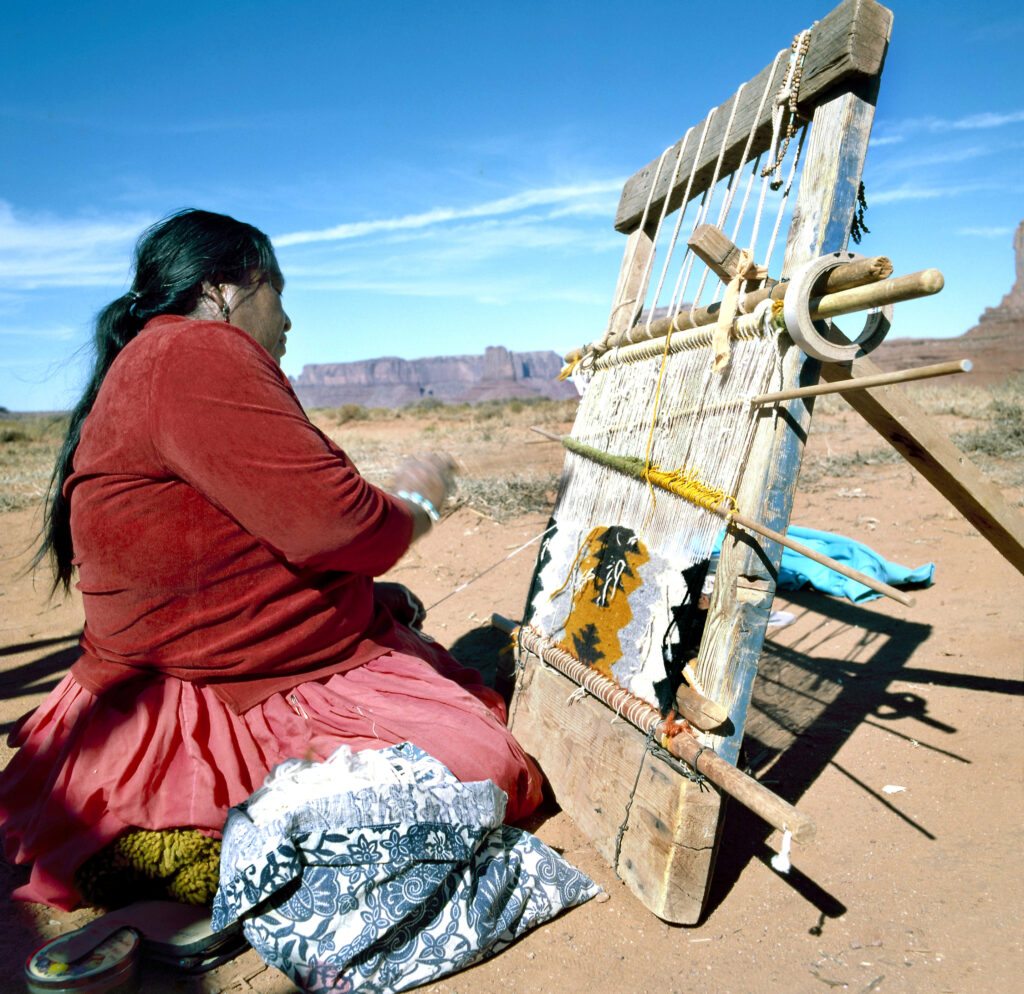
Experiencing Navajo arts and crafts in person can be a deeply enriching experience, offering a firsthand glimpse into the rich cultural heritage and artistic traditions of the Navajo people. Here are some notable places to visit to experience Navajo arts and crafts firsthand:
Navajo Nation Museum, Window Rock, Arizona
The Navajo Nation Museum is a cultural hub located in the capital of the Navajo Nation. It houses a vast collection of artifacts, including traditional and contemporary Navajo art, jewelry, textiles, and pottery. The museum also hosts exhibitions, workshops, and cultural events that provide insight into Navajo history and artistic practices.
Hubbell Trading Post National Historic Site, Ganado, Arizona
Established in 1878, Hubbell Trading Post is the oldest continuously operating trading post on the Navajo Nation. It serves as a living museum where visitors can observe traditional Navajo weaving demonstrations, purchase authentic Navajo rugs, jewelry, and crafts, and learn about the history of trade in Navajo culture.
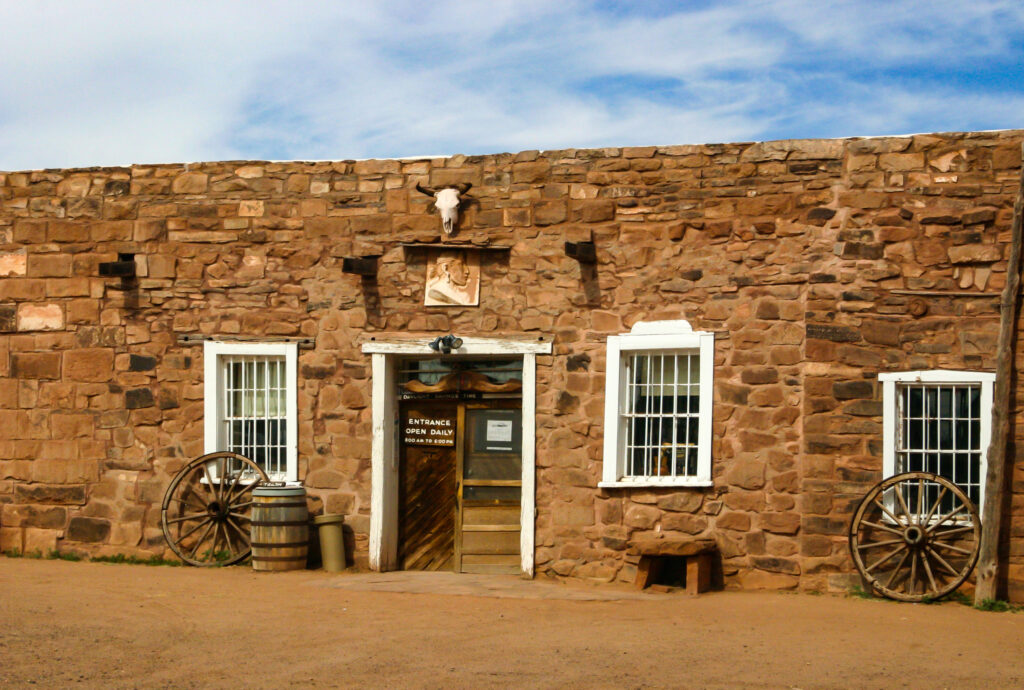
Monument Valley Navajo Tribal Park, Utah/Arizona
Monument Valley offers breathtaking landscapes and a deep cultural experience. Guided tours led by Navajo guides often include visits to local artisans’ homes, where visitors can see traditional rug weaving, pottery making, and silversmithing in action. The park’s visitor center also features exhibits on Navajo art and culture.

Toadlena Trading Post and Weaving Museum, Newcomb, New Mexico
This historic trading post and museum focuses on the Toadlena/Two Grey Hills weaving tradition, renowned for its intricate designs and high-quality wool. Visitors can explore the museum’s extensive collection of rugs, learn about the weaving process, and purchase rugs directly from local weavers.
Navajo Cultural Center, Kayenta, Arizona
The Navajo Cultural Center offers educational exhibits on Navajo history, culture, and arts. It frequently hosts cultural events, including traditional dance performances, storytelling sessions, and artisan demonstrations, providing a comprehensive cultural experience.
Cameron Trading Post, Cameron, Arizona
Established in 1916, Cameron Trading Post is a historic site where visitors can purchase authentic Navajo arts and crafts, including rugs, jewelry, pottery, and beadwork. The trading post also features a gallery with exhibits on Navajo art and a restaurant serving traditional Navajo cuisine.
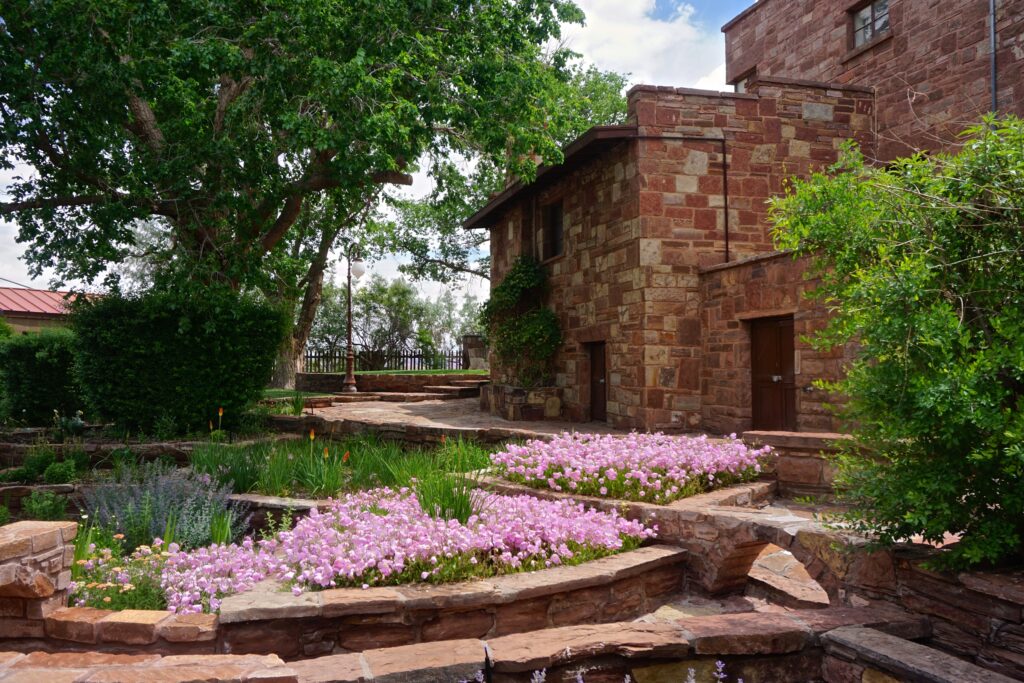
Chinle, Arizona (Gateway to Canyon de Chelly)
Chinle serves as the gateway to Canyon de Chelly National Monument, a site of great cultural and spiritual significance to the Navajo people. Guided tours led by Navajo guides provide access to ancient cliff dwellings and rock art. Local artisans often sell their crafts in Chinle, allowing visitors to purchase directly from the makers.
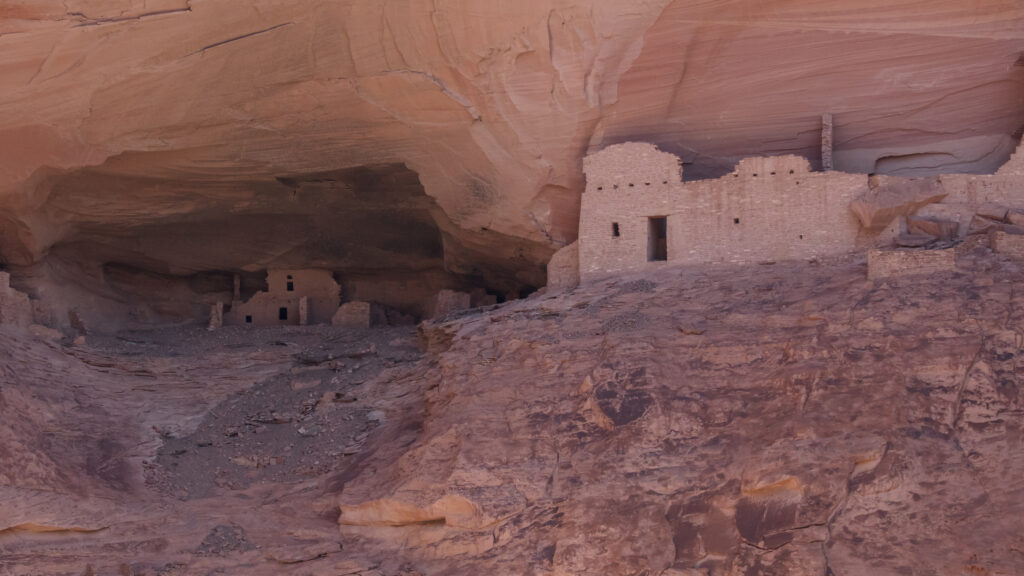
Navajo Nation Fair, Window Rock, Arizona
Held annually in September, the Navajo Nation Fair is the largest Native American fair in the country. It features a wide array of cultural events, including traditional Navajo arts and crafts exhibitions, rodeos, dance competitions, and parades. The fair provides a vibrant and immersive experience of Navajo culture.
Shiprock, New Mexico
Shiprock is known for its iconic rock formation and its cultural significance to the Navajo people. The town hosts various cultural events and markets where visitors can meet local artisans and purchase handmade Navajo crafts. The Shiprock Flea Market is a particularly popular spot for finding unique Navajo arts and crafts.
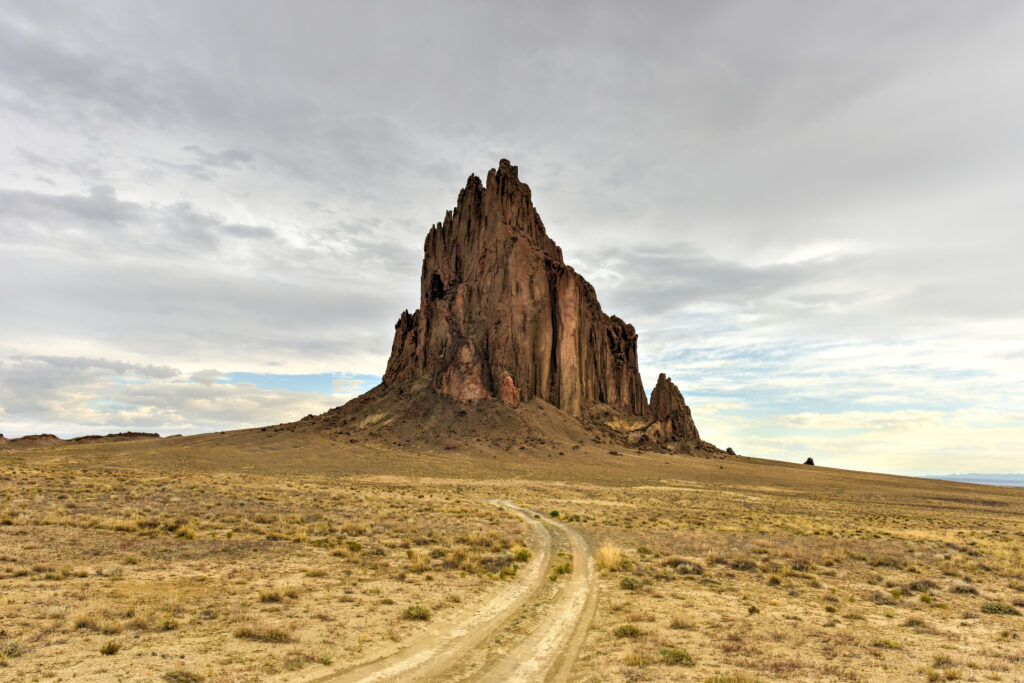
Gallup, New Mexico
Often referred to as the “Indian Capital of the World,” Gallup is a hub for Native American art and culture. The city hosts numerous trading posts, galleries, and markets where visitors can explore and purchase Navajo crafts. The annual Gallup Inter-Tribal Indian Ceremonial is a major event featuring parades, dances, and an extensive arts and crafts fair.
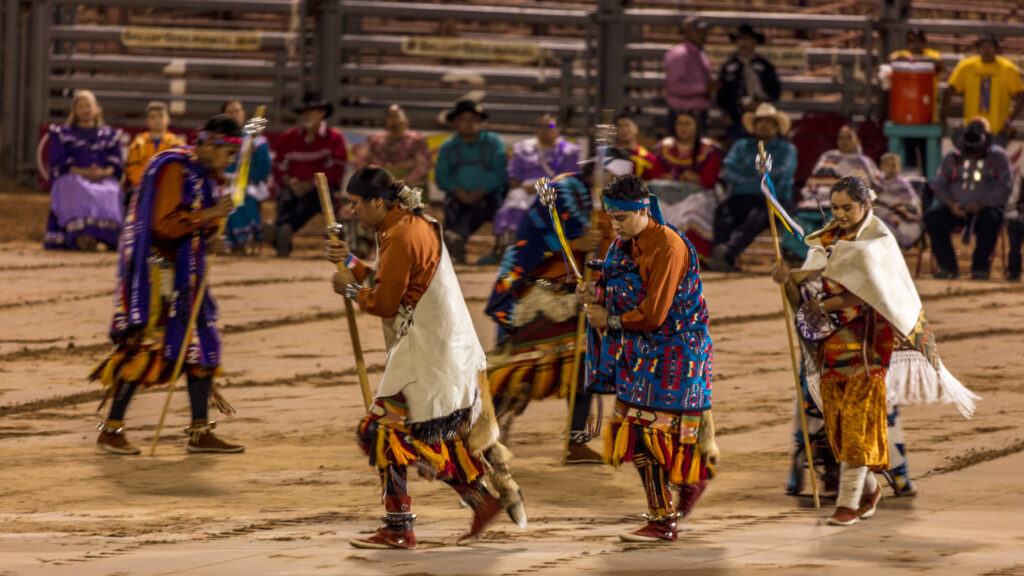
These locations provide a rich array of opportunities to experience Navajo arts and crafts firsthand, offering a deeper understanding and appreciation of the Navajo people’s cultural heritage and artistic traditions.
Navajo arts and crafts are not only beautiful expressions of creativity but also powerful symbols of cultural identity and resilience. From weaving and silversmithing to pottery and beadwork, these traditions are deeply rooted in Navajo history and spirituality, serving as a bridge between the past and the future. As we continue to celebrate and support Navajo artisans and their craft, we honor the enduring legacy of the Navajo people and their timeless contributions to the world of art and culture.
